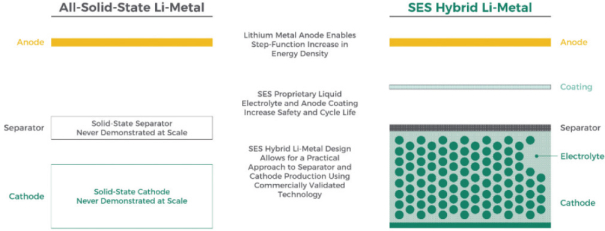changing conditions in the respective jurisdictions, and this will continue to evolve based on the recent availability and distribution of developed vaccines, as well as public perceptions of the vaccines. The global spread of
COVID-19
has created significant volatility, uncertainty, and economic disruption worldwide. The effects and potential effects of
COVID-19
include, but are not limited to, its impact on general economic conditions, trade and financing markets and changes in customer behavior, and significant uncertainty in the overall continuity in business operations. The spread of
COVID-19
has also disrupted the manufacturing, delivery and overall supply chain of EV manufacturers and suppliers and EV batteries, and has led to a global decrease in vehicle sales in markets around the world. In particular, the
COVID-19
crisis may cause a decrease in the demand for EV batteries if fleet operators delay purchases of vehicles or if fuel prices for internal combustion engine vehicles remain at levels that do not create an incentive to accelerate the migration from internal combustion engine vehicles to EVs, an increase in costs resulting from the efforts of manufacturers of EVs or EV batteries to mitigate the effects of
COVID-19
and delays in EV manufacturers’ schedules to full commercial production of EVs and disruptions to these supply chains, among other negative effects.
Governments in affected regions have implemented, and may continue to implement safety precautions, which include quarantines, travel bans and restrictions,
and
orders, business closures, and other public health safety measures. These measures may be in place for a significant period of time and may be reinstituted if conditions deteriorate, which could adversely affect the Company’s
start-up
and manufacturing plans.
Due to the
COVID-19
pandemic, there has been uncertainty and disruption in the global economy and financial markets as stated above. As a precaution, the Company took certain preventive measures in light of this pandemic and reduced certain operational activities during the year ended December 31, 2020. In particular, the Company temporarily reduced employee compensation, recommended that all
non-essential
personnel work from home, and reduced
in-person
participation in research and development activities. As a result, our personnel costs and travel related costs were lower in 2020. The Company was also required to implement additional safety protocols for essential workers, which resulted in delays in the timing of project execution. The Company has assessed the impact and is not aware of any other specific events or circumstances that required an update to the Company’s estimates and assumptions or materially affected the carrying value of the Company’s assets or liabilities as of the date of issuance of these consolidated financial statements. These estimates may change as new events occur and additional information is obtained. Actual results could differ materially from these estimates under different assumptions or conditions.
It is difficult to predict what the lasting impact of the pandemic will be, and what the impact might be if the Company or any of the third parties with whom it engages were to experience additional shutdowns or other prolonged business disruptions. The Company’s ability to conduct its business in the manner and on the timelines presently planned could have a material adverse impact on the Company’s business, results of operations, and financial condition. In addition, depending on the duration and impact of the recurrence or resurgence of
COVID-19
cases or continued evolution of further strains of
COVID-19
and depending on where the infection rates are highest, the Company’s business, results of operations and financial condition may be negatively impacted. The Company will continue to monitor developments as it deals with the disruptions and uncertainties relating to the
COVID-19
pandemic on all aspects of its business and geographies, employees, suppliers, business partners and potential eventual distribution channels and customers. Even after the
COVID-19
pandemic has subsided, the Company may continue to suffer an adverse effect to its business due to the global economic effect, including any economic recession. If the immediate or prolonged effects of the
COVID-19
pandemic have a significant adverse impact on government finances, it would create uncertainty as to the continuing availability of incentives related to electric vehicle purchases and other governmental support programs. In addition, a recurrence of
COVID-19
cases or an emergence of additional variants or strains could cause other widespread or more severe impacts depending on where infection rates are highest.





